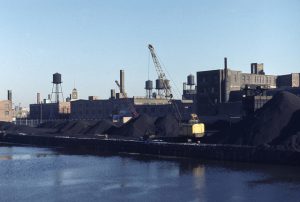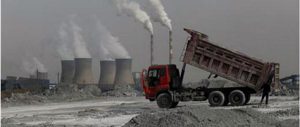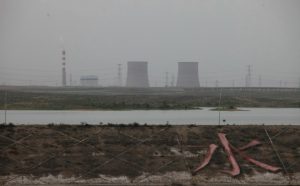Over the last decade, predicting the future of global energy markets has centred more or less on what people thought China was going to do. Analysts and researchers have since assumed that Chinese coal demand is insatiable and will continue along this trend. This viewpoint has, consequently, underpinned the future pricing assumptions of the market and justified capital expenditure on bringing more production onstream.
However, a number of the heavyweights of mainstream coal analysis have now suggested the tide is turning, strengthening calls made in Carbon Tracker’s Wasted Capital and Stranded Assets report for those reliant on the global coal markets to consider alternative Chinese coal demand futures.
In June, Deutsche Bank asserted that ‘China will not be the strong driver of thermal coal performance that it has been in the past 3 years’. One month later, Goldman Sachs stated the window for thermal coal investments is closing, in no small part because China will go from a ‘boost to a drag’ on demand for coal.
However, it wasn’t until last week when Citi called the end of China’s increasing coal demand by 2020 that an established research house had put a timescale on this transition. So why are they so confident in this forecast? Well, the signals are clear.
The much heralded downturn in China’s economic growth is predicted to play a role, but perhaps of greater importance is the larger economic transition China is experiencing. Favouring consumption rather than industrial-led growth is leading to a ‘decoupling’ of China’s GDP growth from their growth in energy demand – essentially, China will need less and less coal to generate the same economic value. Ambitious energy-efficiency targets within the 12th Five Year Plan to peak coal demand at four billion tonnes, and resource-efficiency improvements through the increasing uptake of renewable energy are seen as key drivers within this process.
Coal demand will also continue to face pressure from regulations on water supply, carbon emissions and air quality – just this week it was announced new coal-fired power plants will be banned in Beijing, Shanghai and Guangzhou to combat air pollution. President Xi recently said that ‘to improve the environment is to develop our productivity – such concepts should be deep rooted’. Nevertheless, Citi predict coal demand will be ‘substantially lower…than many market participants currently anticipate’.
The last part of Xi’s quote really hits the nail on the head – as long as market actors refuse to challenge their assumptions and anticipate different outcomes, the risks associated with over-valued assets will continue to amass, forming a carbon bubble. We all saw how the housing bubble worked out.
Carbon Tracker’s report on Australia’s Carbon Bubble highlighted the risk a fall in Chinese coal demand has to their domestic export market. But given China’s global significance, this is a risk to all coal exporters. The likes of Indonesia, Mongolia and South Africa all need to consider how competitive their assets are in this new context – might coal that was destined for China displace their exports elsewhere?
The likely result is that some coal assets will not be burnt and are instead ‘stranded’ having significant knock-on effects for those invested in their success. Identifying this risk and becoming resilient to it, is central to Carbon Tracker’s research and the Citi report is a landmark instance of mainstream analysis supporting this aim by stating
‘One thing is clear – investors now need to reassess the central probabilities around Chinese coal and energy demand and re-price the wide range of affected assets’.
The smart first-movers have left the pack and are questioning the nature of China’s future energy demand. The question remains, how to make the herd follow.
Luke Sussams is a researcher at Carbon Tracker







